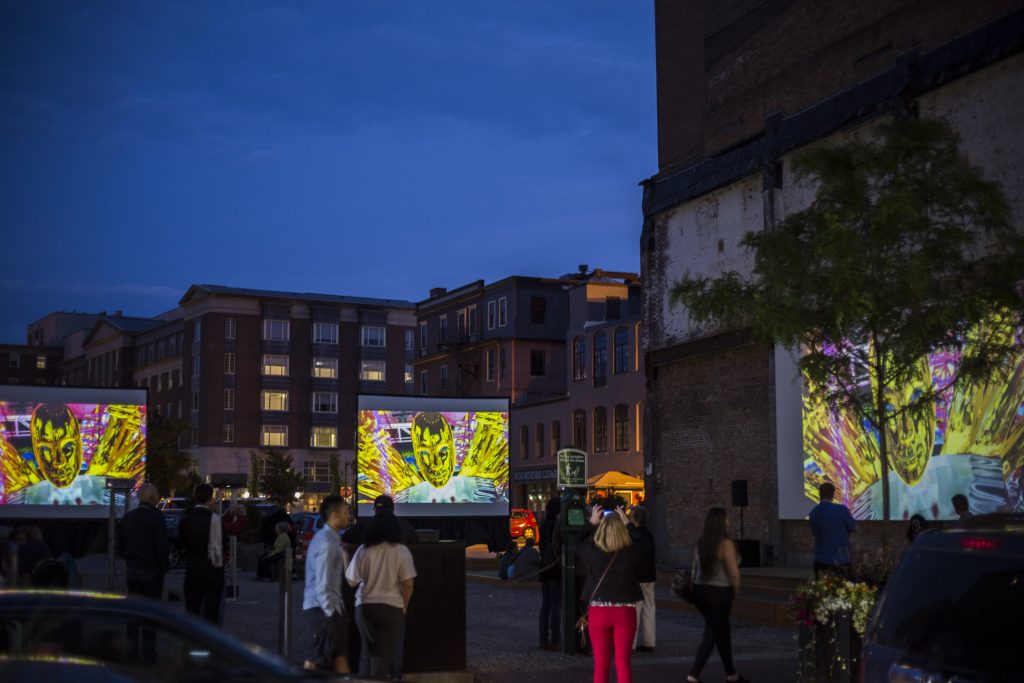
Ziyang Wu, Smarter City 2
Ziyang Wu
Lives and works in Minneapolis
Mentor: Douglas Hegley
Biography
Originally from Xuzhou, Jiangsu, China, Ziyang Wu received his MFA from the Rhode Island School of Design and his BFA from the Florence Academy of Fine Art in Italy. Since then his art practice has been focused on what Henri LeFebvre termed micro-alienation within contemporary Chinese society through a combination of video, painting, installation and performance. Wu has shown his work internationally in China, USA, and Europe including exhibitions at Nancy Margolis Gallery in New York, at the Providence Biennial for Contemporary Art, at the Academy Art Museum in Maryland, at Milan Design week and at Medici Palace in Florence, Italy. Wu is currently a visiting professor at Minneapolis College of Art and Design.
Artist Statement
I have noticed a force in contemporary China— the politics of feudal empire and the power of capitalist business culture—which enables individuals’ values and rationality to almost disappear in the details of everyday life. I call this phenomenon ‘micro-alienation’ and try to express my complicated feelings toward it through my work. My work is a meditation on current, and specific narratives of the everyday, mixed with personal experiences, self-hallucinations and cultural readings. I insist that art should put forward some non-systematic and non-disciplinary visual thinking to touch the audience’s nerve that is hypnotized by society.
I make it a point to differentiate my work from the heavy approach that most older generation of Chinese artists take and instead draw on themes of absurdity and the carnival. This allows for a proposition to be presented which is a subversive critique of bigotry and indulgence. The piece The Donkey Must Die, for example, uses the approach of absurd comedy to mock the corruption of the legal system alienated by power and money. In the Facekini Series, I express the spiritual alienation of ordinary people in the form of farce. I want the audience to have slight discomfort in the inexplicable pleasure. This desire for viewers to experience both discomfort and pleasure lies in my own beliefs that are should evoke a sense of spiritual interrogation.
Reflecting on a bygone era of significant cultural change and the development of the internet, I am interested in the ideas that emerged from that time period, in particular the conflicts between old and new, which have been further accelerated by my wide-ranging exploration. I’m always dissatisfied by a single visual form and seek to include different elements in my works such as technology, drama and visual samples from different cultures and sub-cultures. For example, the background music of the work The Story of The pig is a mixture of Buddhist music and Korean Pop music. Through this collision and recombination, a new form that surplus culture will be generated. Following the concept of ‘interstitial’ and ‘in between’, my works sits at the edge of many disciplines, giving me more possibilities to find a unique form that reflects contemporary reality.
From Ziyang’s Proposal
“If we regard everyday life as the frontier between the dominated and undominated sectors of life, and thus as the terrain of chance and uncertainty, it would be necessary to replace the present ghetto with a constantly moving front; to work ceaselessly toward the organization of new chances”
– Guy Debord 1961 ‘Perspectives of Conscious Changes in Everyday Life
This proposal is the continuation, integration, and collision of my art practice.
I will make the exhibition space into a subway station by presenting my perspective on everyday narratives that are completely different from peoples’ view of the everyday based on the context of Pokemon Go. The audience will walk through my setting which I call the ‘Brave New World’.
The audience will see reconstructed everyday scenes and narratives. These scenarios will be both familiar and unfamiliar. Through these ‘micro alienation’ narratives I will examine the idea of celebration, humor, domination, repression, boredom, confusion, perplexity, and the carnival.
Themes of the project:
A. People’s non-stop conversion in the virtual and real life
B. People cannot escape the impact of various types of fragmentations of information. All kinds of information create a second reality.
C. The strong current uncertainty of social life.